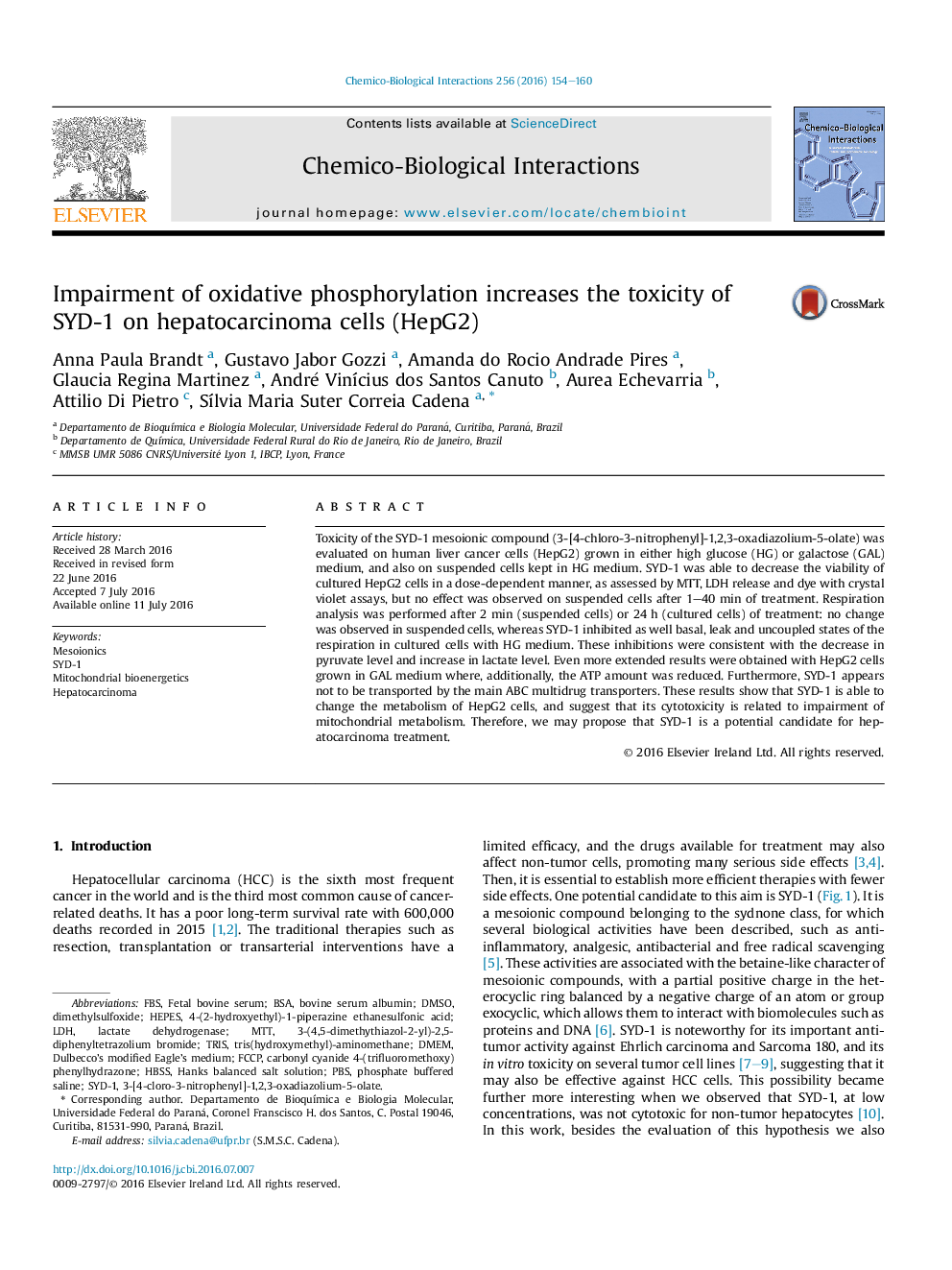| کد مقاله | کد نشریه | سال انتشار | مقاله انگلیسی | نسخه تمام متن |
|---|---|---|---|---|
| 2579901 | 1561585 | 2016 | 7 صفحه PDF | دانلود رایگان |

• SYD-1 is toxic to HepG2 cells.
• The impairment of oxidative phosphorylation is related to SYD-1 toxicity.
• SYD-1 appears not to be transported by ABCG2 multidrug transporters.
• SYD-1 is a potential candidate to hepatocarcinoma treatment.
Toxicity of the SYD-1 mesoionic compound (3-[4-chloro-3-nitrophenyl]-1,2,3-oxadiazolium-5-olate) was evaluated on human liver cancer cells (HepG2) grown in either high glucose (HG) or galactose (GAL) medium, and also on suspended cells kept in HG medium. SYD-1 was able to decrease the viability of cultured HepG2 cells in a dose-dependent manner, as assessed by MTT, LDH release and dye with crystal violet assays, but no effect was observed on suspended cells after 1–40 min of treatment. Respiration analysis was performed after 2 min (suspended cells) or 24 h (cultured cells) of treatment: no change was observed in suspended cells, whereas SYD-1 inhibited as well basal, leak and uncoupled states of the respiration in cultured cells with HG medium. These inhibitions were consistent with the decrease in pyruvate level and increase in lactate level. Even more extended results were obtained with HepG2 cells grown in GAL medium where, additionally, the ATP amount was reduced. Furthermore, SYD-1 appears not to be transported by the main ABC multidrug transporters. These results show that SYD-1 is able to change the metabolism of HepG2 cells, and suggest that its cytotoxicity is related to impairment of mitochondrial metabolism. Therefore, we may propose that SYD-1 is a potential candidate for hepatocarcinoma treatment.
Journal: Chemico-Biological Interactions - Volume 256, 25 August 2016, Pages 154–160